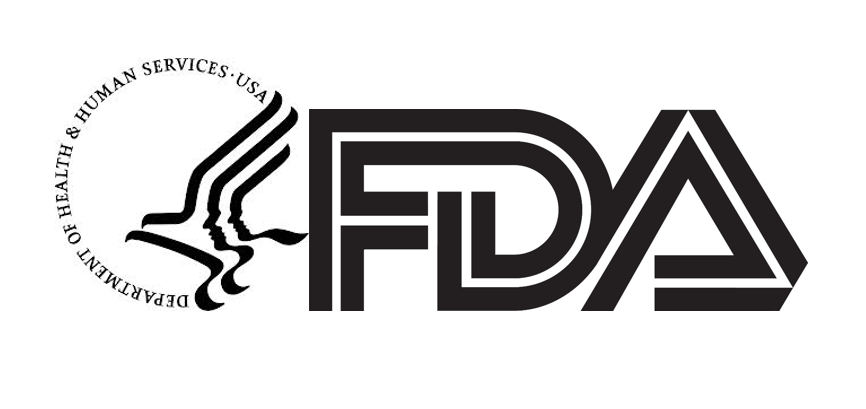Anabolic steroids, synthetic substances that mimic the effects of the male hormone testosterone, have been utilized in the medical field to manage various health conditions. These powerful chemicals serve essential roles, particularly in promoting muscle growth and recovery, and are not limited to enhancing physical performance. Within the confines of a professional healthcare setting, physicians prescribe anabolic steroids to treat hormonal issues, such as delayed puberty in adolescents or to combat muscle loss in diseases like cancer and AIDS.
The use of anabolic steroids, however, extends beyond clinical applications and has become synonymous with sports and bodybuilding. Athletes often turn to these compounds for their potential to improve strength and performance. Nevertheless, this use is fraught with controversy and significant health risks. Long-term or excessive use can lead to severe adverse effects, including heart disease, liver problems, reproductive disorders, mood swings, and psychiatric issues.
Regulatory bodies have put stringent measures in place to control the distribution and prohibit the non-medical use of anabolic steroids due to their potential for abuse and the associated health risks. Despite this, there continues to be a high rate of illicit use. This dichotomy highlights the importance of education and awareness about anabolic steroids. Understanding their legitimate medical applications, potential for misuse, and associated risks is crucial for healthcare professionals, athletes, and the wider public.
Quick Summary
- Anabolic steroids are used medically for muscle growth and hormone-related conditions.
- Non-medical use in sports can lead to serious health risks and is subject to regulation.
- Education on the proper use and risks of anabolic steroids is essential for public health.
Types of Anabolic Steroids

Anabolic steroids are synthetic drugs that mimic the effects of the male hormone testosterone. They are classified into three main groups based on their chemical structure and the effect they have on the body.
Testosterone Derivatives
These anabolic steroids are structurally similar to testosterone and are designed to promote muscle growth with more anabolic properties compared to their androgenic effects. Oxandrolone and methyltestosterone fall under this category. Oxandrolone, known by the trade name Anavar, has a reputation for being a relatively safe and mild steroid often used to preserve muscle mass. Methyltestosterone is a less common form that has been used to treat men with testosterone deficiency.
Dihydrotestosterone Derivatives
The derivatives of dihydrotestosterone (DHT) exhibit more androgenic properties and are commonly used for achieving gains in strength rather than size. Oxymetholone and fluoxymesterone are two such derivatives. Oxymetholone, also known as Anadrol, is known for increasing red blood cell production and can promote significant increases in strength and size. Fluoxymesterone, with the trade name Halotestin, is potent and fast-acting, often associated with increased aggression and strength.
Nandrolone Derivatives
Nandrolone derivatives are known for their ability to promote tissue growth and positive nitrogen balance, indicative of anabolic activity. The drug nandrolone, commonly known in its ester form as nandrolone decanoate or Deca-Durabolin, is particularly noted for its therapeutic benefits, including joint pain relief and muscle growth with less liver toxicity compared to other oral steroids.
References
Medical use of Anabolic Steroids

Anabolic steroids, synthetic versions of the primary male hormone testosterone, serve critical roles in managing various medical conditions. They are instrumental in treating hormonal disorders, assisting individuals with wasting syndromes, and managing certain types of anemia.
Hormonal Disorders
In males, hypogonadism is a condition characterized by insufficient testosterone production by the testes. Anabolic steroids are frequently employed to boost testosterone levels, which are essential for maintaining muscle mass, libido, and bone density—factors often compromised in this disorder. Treatment with anabolic steroids can also be beneficial in cases of delayed puberty, helping to induce and maintain normal developmental changes.
| Benefits of Anabolic Steroids in Hormonal Disorders |
|---|
| – Increase testosterone levels |
| – Improve muscle mass and strength |
| – Enhance libido |
| – Promote secondary sexual characteristics |
Wasting Syndromes
Patients suffering from cancer or HIV may experience severe muscle wasting, significantly impacting their quality of life and survival. Anabolic steroids can play a vital role in increasing body mass and overall strength, helping these patients combat the devastating effects of muscle atrophy. By facilitating the retention or growth of muscle mass, anabolic steroids offer a way to counteract the catabolic processes associated with these conditions.
- Muscle wasting conditions treated with anabolic steroids:
- Cancer-related cachexia
- HIV-associated muscle wasting
Anemia Management
Anemia, a condition marked by reduced levels of red blood cells, can lead to fatigue and weakness. Anabolic steroids can stimulate the production of red blood cells, thereby aiding in the management of various forms of anemia. This is particularly relevant in anemia associated with kidney disease, where anabolic steroids may be used as part of the therapeutic regime.
Benefits:
- Stimulate red blood cell production
- Alleviate symptoms of anemia, such as tiredness and weakness
Anabolic Steroids in Sports and Bodybuilding

Anabolic steroids have become prevalent in competitive sports and bodybuilding due to their ability to enhance muscle growth and athletic performance. These substances are controlled and regarded as performance-enhancing drugs.
Performance Enhancement
Athletes often use anabolic steroids to gain a competitive edge. Steroids can improve strength, stamina, and speed, which are crucial in many sports. Cycling of steroids, or taking them intermittently, is a common strategy to maximize the benefits while attempting to reduce side effects and avoid detection during drug testing.
Muscle Growth Strategies
In bodybuilding, anabolic steroids are used to increase muscle size and reduce body fat. Muscle growth is achieved through a combination of resistance training and precise anabolic steroid regimens. Bodybuilders may use a bulking strategy, taking high doses to build muscle, followed by a cutting phase to reduce fat and retain muscle mass.
Legal and Ethical Considerations
The use of anabolic steroids in sports is banned by most professional and amateur athletic associations. These substances are often labeled as controlled substances in many jurisdictions. The ethical debate centers on the desire for a level playing field and concern over long-term health repercussions for the athletes who use them.
Adverse Effects and Risks

Anabolic steroids have a range of side effects stemming from hormonal disruptions to metabolic imbalances, increasing the risk of serious health issues.
Hormonal Imbalance
Anabolic steroids mimic testosterone, leading to alterations in hormonal levels. In men, this can cause testicular atrophy, infertility, and gynecomastia, which is the development of breast tissue. In women, steroids may induce a masculine appearance, such as a deeper voice or increased body hair. Mood fluctuations, including increased aggression and potential addiction, are also linked to hormonal imbalance.
Metabolic Issues
Long-term steroid use impacts the liver and can lead to liver disease. It also affects cholesterol metabolism, elevating the bad LDL cholesterol and decreasing the good HDL cholesterol. These metabolic disruptions can significantly burden the liver and alter blood lipid profiles, potentially precipitating life-threatening conditions.
Cardiovascular Concerns
Using anabolic steroids increases the risk of cardiovascular diseases. They can contribute to the development of hypertension, blood clots, and myocardial infarction. By altering blood lipid levels, particularly by increasing LDL cholesterol, steroids add to the likelihood of plaque deposit formation within arteries, exacerbating cardiovascular health risks.
Liver Disease:
- Incidence: Increased liver enzyme levels indicating liver stress
- Condition: Potential progression to liver failure or cancer
Blood:
- Effects on Red Blood Cells: Elevated red blood cell counts, posing risks such as thrombosis
- Cholesterol Levels: Increased LDL and decreased HDL cholesterol
Mood and Behavior:
- Mood Swings: Heightened chance for psychiatric effects including depression and anxiety
- Aggression: Roid rage, characterized by aggressive behaviors
References
- Hormonal effects:
https://pubmed.ncbi.nlm.nih.gov/15248788/ - Metabolic issues and liver:
https://www.ncbi.nlm.nih.gov/pmc/articles/PMC4744441/ - Cardiovascular risks:
https://www.ahajournals.org/doi/abs/10.1161/CIRCULATIONAHA.106.674930
Regulation and Control

Anabolic androgenic steroids (AAS) are controlled substances due to their potential for misuse, dependence, and adverse effects. Regulation aims to ensure proper use under medical supervision and prevent steroid misuse within sports and bodybuilding communities.
Prescription Regulations
Prescription of Anabolic Steroids requires strict medical justification, such as for male hypogonadism or certain types of anemia. Androgens, the family of hormones that includes testosterone and AAS, bind to the androgen receptor within the body. This binding triggers the development and maintenance of male characteristics. Health professionals must adhere to guidelines to avoid unnecessary gonadotropin suppression and endocrine system disruption.
- The Endocrine Society recommends limiting prescriptions to cases of clear clinical need, and:
- Regular monitoring of hormone levels
- Assessment for potential adverse effects
Anti-Doping Policies
Anti-doping Policies enforce rules against AAS use in competitive sports. These policies support the integrity of sports and protect the health of athletes. They:
- Conduct tests for AAS presence in an athlete’s system
- Implement sanctions on athletes found to have violated doping rules
- Run educational programs to deter athletes from engaging in steroid misuse
Anti-doping organizations such as the World Anti-Doping Agency (WADA) impose rigorous testing procedures to detect unnatural levels of androgens or signs of exogenous AAS use.
References
- The Endocrine Society. (n.d.). Clinical Practice Guidelines. https://www.endocrine.org/clinical-practice-guidelines
- World Anti-Doping Agency. (n.d.). Prohibited List. https://www.wada-ama.org/en/content/what-is-prohibited
Frequently Asked Questions

Anabolic steroids, when prescribed by healthcare professionals, can offer therapeutic benefits. This section examines common inquiries regarding their medical application.
What are the potential benefits of anabolic steroids when used for medical purposes?
Anabolic steroids can help in muscle growth, tissue repair, and recovery. They are also utilized to improve anemia and assist patients with chronic wasting conditions, such as cancer and AIDS, by enhancing muscle mass and body strength.
How do doctors determine the appropriate use of anabolic steroids in patients?
Doctors assess the patient’s medical condition, potential benefits, and risks before prescribing anabolic steroids. This consideration includes a thorough medical history, current health status, and the specific therapeutic needs of the patient.
What differentiates medical-grade anabolic steroids from those used for bodybuilding?
Medical-grade anabolic steroids are manufactured in regulated facilities, ensuring purity and dosage accuracy. In contrast, those used for bodybuilding are often obtained illegally and may be impure or mislabeled.
What are the common types of anabolic steroids prescribed for medical conditions?
Commonly prescribed anabolic steroids include oxandrolone, nandrolone, and oxymetholone. These are often used to treat conditions such as delayed puberty, some types of impotence, and wasting of the body caused by HIV infection or other diseases.
How do anabolic steroids facilitate muscle growth in clinical scenarios?
Anabolic steroids mimic testosterone, promoting cell growth and division. This action accelerates muscle repair and growth, particularly useful in patients recovering from surgery or suffering from muscle-depleting illnesses.
What are the guidelines for the safe administration of anabolic steroids in medical treatments?
The guidelines emphasize prescription by a qualified medical professional, adhering to recommended dosages, and monitoring for adverse effects. Patient education on potential side effects and the importance of follow-up appointments is also crucial for safety.
Dr. Grant Fourie, a specialist in male hormones, is based in Cape Town, South Africa. He provides comprehensive treatments for conditions related to low testosterone, such as erectile dysfunction, fatigue, and mood changes. His methods include hormone replacement therapy and other modern treatment options.
Contact me via email or phone to book personal appointment in my clinic: The Village Square, Cape Town - South Africa



